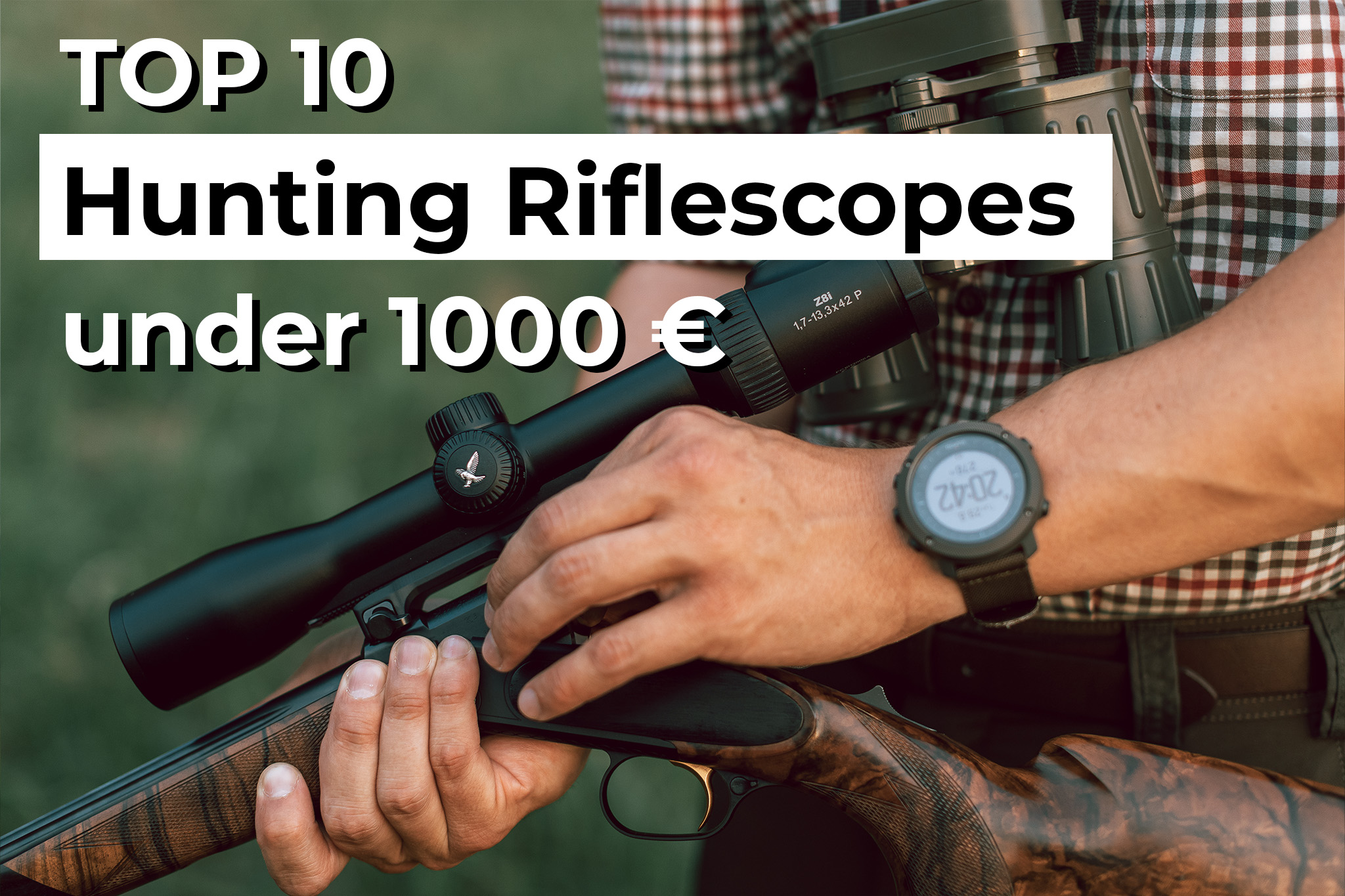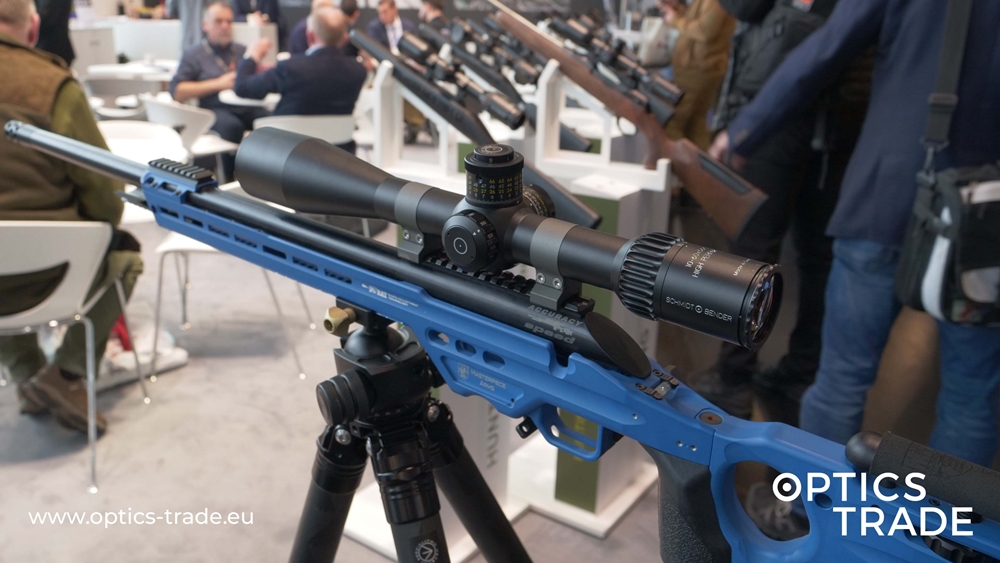Hello and welcome to another Optics Trade Debates video. In each episode, we talk about a different subject and try to answer the most common questions we receive about it. Today, we’ll be touching on another topic that has to deal with the categories on our webpage. Namely, the field target scopes.
We receive many questions about this subcategory of riflescopes, like whether they can be used for long-range shooting or in low light situations. Conversely, people are interested in whether field target scopes can be substituted by ordinary target scopes. As we can see, there is still much misunderstanding when it comes to these optics and their application.
Field target is a specific category of sport shooting. That means that people who partake it, tend already know all about the topic we’re about to discuss. But for everyone else, this debate will hopefully clear up many misconceptions about field target scopes and how they differ from other similar optics.
Let’s start with a little bit of history. In the past, most people who were shooting field target used F Plus riflescopes – that is, long-range riflescopes. Only a couple of manufacturers at the time were producing scopes, designed specifically for the field target application. Nikko Stirling is one of them. The trend of purposely built field target scopes started recently, 2 or maybe 3 years ago.
Field target shooting is a stand-alone sport category. For this type of shooting, airguns or PCP guns with compressed air are used. The distances range from 5 to 70 metres. Field target shooting takes place in open spaces, most often in nature. It’s worth noting that this sport is really challenging since the distances greatly vary and there are many environmental factors such as wind and whatnot to take into account.
Combine that with the fact that lightweight polymer-cased ammunition is used, so the projected path of the bullet is that much more likely to be influenced by external circumstances. Sometimes, field target shooting on 50 metres can be much more challenging than F-Class shooting at 300 metres. Ballistics are truly difficult to calculate.
Riflescopes that fall in this category have high maximum magnification (50x, 52x, 60x etc.). The higher the magnification, the more accurately the shooter can estimate the distance with the help of the parallax.
One of the examples used in the video debate is the Schmidt & Bender 12-50×56 Field Target II scope. While the concept of the scope was revealed in the middle of 2017 or even the year before, the first production models didn’t leave the German factory until 2018. The next model is the Sightron SIIISS 10-50×60 FT IR. Another scope we’ve shown is the March model that is normally used in F-Class shooting but will also serve you well for field target shooting.
The next important feature deals with the parallax. For a precise estimate, a side wheel is put on the parallax adjustment turret. Here, the Schmidt & Bender 12-50×56 Field Target II scope and its magnetic side wheel with a pin serve as a perfect example. In the field target shooting range, the user first puts a white tape around the circumference of the wheel. Before the competition begins, they must determine where the parallax is located at each distance, writing the numbers down on the tape around the wheel.
These distance readings have to be precise in order to help the shooter calculate the bullet drop. It’s only after that the POI (point of impact) can be adjusted with the help of the elevation turret. The parallax on these scopes is very finely adjustable from 7 to 100m since field target shooters never shoot farther than that.
There are many F-Class and benchrest riflescopes with extra high magnifications. But how can a customer tell if the riflescope in question can be also used as a field target scope or not? In short, it has to have a parallax that goes down to 7 metres and the magnification power above 40x. That’s as basic as we can possibly get.
Purposely built field target scopes are the best choice and though they sport similar features, only some F-Class riflescopes can be used for field target shooting. Note that almost no field target scopes can be utilized for F-Class shooting because they have the parallax adjustment range only from 7 metres to 150 or 200 metres. Imagine trying to shoot at 500 metres when the limitations of the parallax on field target scopes are what you’re working with.
The Schmidt & Bender 12-50×56 Field Target II scope is a very interesting optical piece. Its parallax starts at roughly 10 metres and by 70 metres you already have 180° of turret turn. This is really out of the ordinary, one of the features that make field target scopes uniquely suitable for their this type of shooting only. The adjustment between 20 and 70 metres is precise and there’s a lot of travel, allowing you for incredible accuracy of distance readings.
Some F-Class scopes start with 30 metres and then go from 30 to 100 metres in 2 millimetres. Theis obviously makes them unusable for field target shooting application as you won’t be able to read the distance with the required precision.
These scopes have to be completely impervious to temperature changes to achieve absolute accuracy. If the shooter does their distance readings at different temperature conditions than the ones present during the actual competition, the results will betray that fact. That’s why so many field target scopes come in silver. These do not heat up in the sun as much as classic, black riflescopes and are also more aesthetically pleasing when mounted on airguns that are also traditionally silver-coloured.
Since we’re on the topic of mounting – many customers wonder if the sizable side wheel is going to be a problem when mounting their field target scope. The simple answer is no. Airguns are rather narrow, so there is always enough space left on the side for the parallax wheel. Of course, when it comes to F-Class rifles, there might be issues since the stocks are much wider and field target scopes are simply not made to be mounted on those.
Most field target scopes come with illumination, while F-Class riflescopes do not since the illumination is not needed when you only shoot in broad daylight. Field target scopes usually feature a 30-millimetre tube though there are exceptions to the rule.
The clicks are usually ⅛ MOA. The turrets differ from one manufacturer to another. Sightron, for instance, makes capped turrets. Compare that to tactical (exposed) turrets found on Schmidt & Bender and Kahles field target scopes. Field target scopes more often than not feature zero-stop turrets and various turn indicators.
The reticle can be either in the 1st focal plane (FFS) or in the second (SFP). The second option is a little bit more common. For example, the FFS reticle can be ordered from Schmidt & Bender, while Sightron and Kahles all make theirs in the second focal plane only.
That’s rather interesting because the user is not shooting on really long distances. But while 35 metres seem like nothing, the targets used in field target shooting are really small. If the field target competition is held in the forest, the users simply need the reticle illumination. Without it, there is no hope for accuracy in a low light situation.
There aren’t too many high-quality manufacturers of field target scopes even in today’s market. So let’s name the reliable brands that have this sub-category of riflescopes in their catalogue: March, Hawke, Schmidt & Bender, Kahles, Delta Optical, Sightron and Vortex. These scopes are truly expensive, with prices averaging 3000 euros and engineered with a specific purpose in mind. There are, of course, some more affordable options like Sightron and Hawke but these models usually come with slight problems of accuracy and tracking.
Even though they are put on airguns, field target scopes are serious business. Not only that, they are more precise and advanced than regular sport shooting scopes, as well as leaps and bounds more accurate than hunting riflescopes.
We would like to thank you for your time. We hope this debate covered the majority of your questions. But just in case we forgot anything, you are most welcome to leave a comment down below or send us an email. If you liked the video, hit the “Like” button and subscribe to our YouTube channel. See you in the next Optics Trade Debates video!
Products mentioned:
Field Target Scopes




